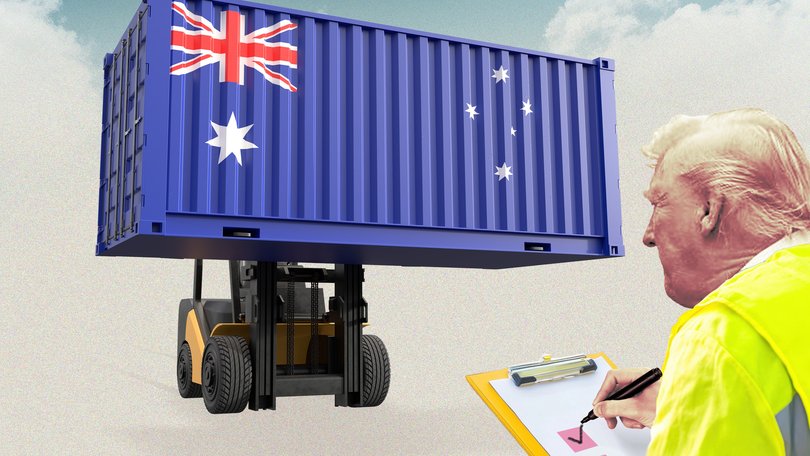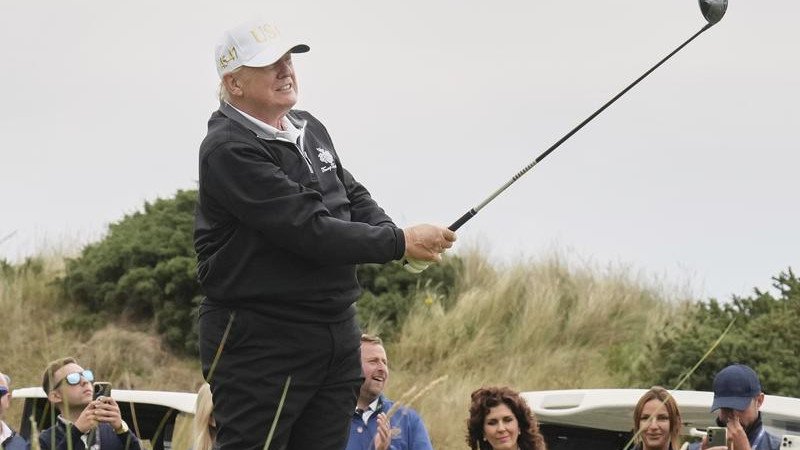NICOLA SMITH: US ‘Liberation Day’ reprieve as Donald Trump’s tariffs at 10 per cent or lower on Australia

Trade Minister Don Farrell has hailed Australia’s reprieve from higher US tariffs as a “vindication” of the Albanese government’s “cool and calm” diplomacy with Washington.
Canberra breathed a sigh of relief after US Commerce Secretary Howard Lutnick personally messaged Mr Farrell to confirm Australian goods would not be subjected to a levy of more than ten per cent.
It had been a nerve-wracking few days following US President Donald Trump’s musings on a Scottish golf course that the global baseline could be doubled to 20 per cent, and the Trade Minister revealed there had been some pressure from within the US system for a hike.
Sign up to The Nightly's newsletters.
Get the first look at the digital newspaper, curated daily stories and breaking headlines delivered to your inbox.
By continuing you agree to our Terms and Privacy Policy.“What this decision means, in conjunction with all of the other changes to other countries, is that Australian products are now more competitive into the American market,” Mr Farrell said.
“This means products like wine, like beef, like lamb, like wheat, in a relative sense, are cheaper into the United States,” he said, adding that the Government would assist exporters to increase the volume of exports to the US and other countries.
Countries around the world had been given a deadline of August 1 to negotiate better tariff deals for their exports to the US, although none have achieved a rate of below ten per cent.

Mr Farrell said he hoped this would now be the “end of the matter” and that “our producers, our winemakers, can get back to normal relationship with the United States, where we don’t have to worry about changes in tariff rates.”
Trade with the US only accounts for less than five per cent of Australian exports and, according to the latest data, Australian beef sales have risen since President Trump announced his “Liberation Day” tariff regime in early April.
But although Friday brought relatively good news for Canberra, the outlook for Australia, and the global trading system more generally, is still not fully clear.
Officials say it will take time to calculate the exact impact of the Trump administration’s move to upend global trading norms on the Australian economy.
Stock markets across the Asia Pacific region slid in the early hours of trading as the White House unveiled its historic new tariffs across the globe.
The latest White House announcement means the ten per cent tariff will apply to countries with which the US has a trade surplus but 15 per cent to about 40 countries with which it has a trade deficit.

An even higher rate of up to 41 per cent will be levied on more than a dozen nations under emergency powers deployed by the President.
Further unpredictability looms on the horizon as the US and China — Australia’s largest trading partner – continue to try to thrash out a deal that would defuse a trade war between the world’s two largest economies.
US and Chinese officials agreed earlier this week to extend a 90-day tariff truce until August 12 to reach an agreement. Failure to do so would threaten global growth.
Mr Farrell on Friday tried to mitigate some of that uncertainty by announcing he had invited Commerce Secretary Lutnick to Australia for talks on reducing tariffs to zero.
“We will continue to put the argument to the United States that they should remove all tariffs on Australian products in accordance with our free trade agreement,” he said.
The visit, if confirmed, is unlikely to quell domestic political pressure on Prime Minister Anthony Albanese to secure his first direct meeting with Mr Trump to personally make the case for full tariff relief — a point the Opposition has repeatedly rammed home this week.
“Our leader hasn’t prioritised the (US) relationship. So, our people, our administration, our government will be watching the media to see what’s going on, which is very disappointing,” shadow trade minister Kevin Hogan said on Friday morning ahead of the announcement.
However, Australia’s ability to maintain the status quo for its exporters — currently the best deal on the table — through the tumult of months of global negotiations with the mercurial US president suggests the Government’s quiet “wait and see” approach has worked.
US officials are believed to have advised the Government, and the Opposition, behind the scenes, to keep a low profile on tariffs, including on the issue of Australian beef exports, which Mr Trump singled out for special ire in his first major trade proclamation on April 2.
“Australia bans — and they’re wonderful people, and wonderful everything — but they ban American beef,” he said at the time.
Mr Trump last week lauded Australia’s decision to lift long-standing biosecurity import restrictions on US beef, predicting the US would now “sell so much” beef to Australia — a suggestion officials have played down as not being grounded in market realities.
Australia banned beef imports from the US in 2003 after the fatal “mad cow disease” was discovered in American cattle. It removed the blanket ban in 2019, but curbs remained on beef sourced in Canada and Mexico and slaughtered in the US.
The Government opened the door to all US imports last week after a decade-long biosecurity review, insisting that industry standards would not be compromised.
Mr Farrell insisted the decision was taken “independently of these trade negotiations.”
But the timing was also fortuitous.
Beef exports, so far, have not been adversely affected by the Trump tariff regime.
According to a July statement by Meat and Livestock Australia, 134,593 tonnes of beef were exported globally, marking the highest monthly beef export volume ever, and a 27 per cent rise on June 2024.
“We’ve seen double-digit growth in chilled and frozen exports, strong performance across both grassfed and grainfed beef, and significant increases in key markets like Mainland China, South Korea, and the United States,” said MLA Managing Director Michael Crowley.
Concerns remain, however, over the future of pharmaceutical exports amid the shifting tides of White House trade decisions.
Canberra officials on Friday were scrambling to decipher what Mr Trump’s latest threats of a crackdown on major pharmaceutical companies that fail to sell cheaper drugs to the US meant for Australia, although Mr Farrell said he did not expect it to affect domestic prices.
Overnight, the President sent letters to the leaders of 17 companies demanding they slash US prescription drug prices to match those paid overseas or face Government measures to do so.
Earlier this week, Health Minister Mark Butler said the Government was still “trying to have a sense of what the US Administration is planning” after the Trump administration recently floated a 200 per cent tariff.
But Labor has repeatedly stressed the Pharmaceutical Benefits Scheme, which guarantees cheaper medicines for Australians, will not be on the table in any trade negotiations.
“We’re doing everything we can to prosecute our interest as Australians,” he said.

